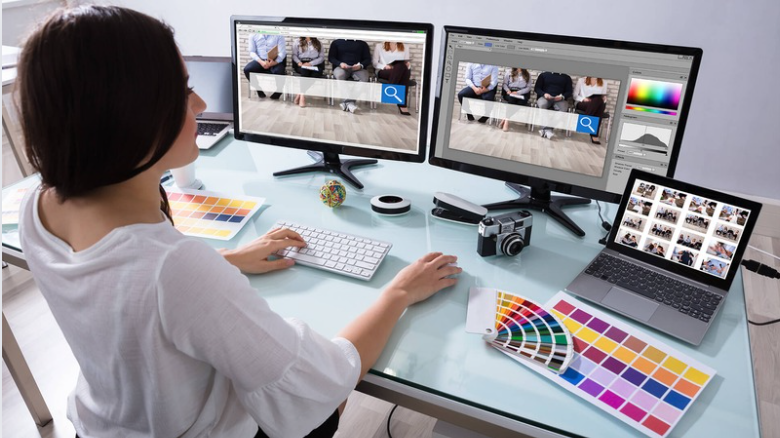The Art and Science of Website Design: Navigating the Role of the Modern Website Designer
In the ever-evolving digital age, the role of the website designer has transformed from a mere technical function to an intricate blend of art and science. Website designers are no longer just builders of digital spaces; they are architects of online experiences, blending creativity with technology to craft engaging and functional websites. This article explores the multifaceted role of website designers, their skills and tools, the challenges they face, and the future of website design.
The Evolution of Website Design
Website design has undergone significant changes since the early days of the web. In the 1990s, websites were often simple, text-heavy pages with basic graphics. Early designers focused on creating static pages with minimal interactivity. As technology advanced, so did design practices, transitioning from static HTML to dynamic, interactive websites with the advent of JavaScript and CSS.
The early 2000s introduced the era of web 2.0, characterized by more interactive and user-friendly designs. The rise of content management systems (CMS) like WordPress democratized web design, allowing non-technical users to create and manage websites. This period also saw the emergence of responsive design, ensuring websites were accessible across various devices.
Today, website design is a sophisticated field that combines visual design, user experience (UX), user interface (UI), and coding. Modern websites are expected to be aesthetically pleasing, highly functional, and optimized for various devices and platforms.
The Role of a Website Designer
A website designer wears many hats, combining elements of graphic design, UX/UI design, and web development.
Aesthetic Visionary
Designers use color theory, typography, layout principles, and imagery to craft websites that reflect a brand’s identity and resonate with its audience. This involves:
- Choosing a Color Palette: Designers select colors that evoke the right emotions and align with the brand’s image.
- Typography: The choice of fonts and their arrangement influences readability and user experience.
- Imagery and Graphics: Incorporating high-quality images and graphics that complement the site’s content and design.
- User Experience (UX) Expert
UX design is crucial for creating websites that are not only beautiful but also functional and user-friendly. A website designer must understand user behavior and design with the following in mind:
- User Research: Gathering insights about the target audience’s needs, preferences, and pain points.
- Wireframing: Creating low-fidelity prototypes to outline the structure and functionality of the website.
- Usability Testing: Testing prototypes with real users to identify issues and areas for improvement.3.
Tools of the Trade
Website designers use a variety of tools to bring their designs to life.
- Adobe Creative Suite (Photoshop, Illustrator, XD): For graphic design, image editing, and prototyping.
- Sketch: A vector graphics editor tailored for web and UI design.
- Figma: A collaborative design tool for creating interactive prototypes and design systems.
- Webflow: A web design tool that allows designers to create and launch websites without extensive coding.
- InVision: A platform for prototyping and collaboration.
Challenges Faced by Website Designers
Website design is a complex field with several challenges:
-
Keeping Up with Technology
The rapid pace of technological advancement means that website designers must continually update their skills and knowledge. New design trends, tools, and technologies emerge frequently, requiring designers to stay current to remain competitive.
-
Balancing Aesthetics and Functionality
Designing a visually appealing website that is also functional and user-friendly can be challenging. Designers must strike a balance between creativity and usability, ensuring that design choices enhance rather than hinder the user experience.
-
Meeting Client Expectations
Designers often work with clients who have specific visions and expectations for their websites. Managing these expectations while delivering a design that is both effective and aligned with best practices can be a delicate task.
-
Accessibility and Inclusivity
Designing websites that are accessible to all users, including those with disabilities, is an ongoing challenge. Website designers must adhere to accessibility standards and guidelines, such as the Web Content Accessibility Guidelines (WCAG), to ensure their designs are inclusive.
The Future of Website Design
As technology continues to evolve, the field of website design is expected to experience several changes:
-
Artificial Intelligence (AI) and Machine Learning
AI and machine learning are set to revolutionize website design by enabling more personalized user experiences. AI-driven tools can analyze user behavior and preferences to tailor website content and design dynamically.
With the increasing use of voice assistants, designing for voice interaction is becoming more important. Designers will need to create interfaces that accommodate voice commands and conversational interactions.
-
Augmented Reality (AR) and Virtual Reality (VR)
Website designers will explore how to integrate these technologies to create interactive and engaging virtual environments.
-
Focus on Sustainability
As environmental concerns grow, there is a push towards sustainable web design practices. This includes optimizing websites for energy efficiency and reducing their carbon footprint.
Also Read : Liverpool Website Design
Conclusion
The role of a website designer is both an art and a science, requiring a blend of creativity, technical skills, and a deep understanding of user behavior. As the digital landscape continues to evolve, website designers will play a crucial role in shaping how people interact with the web. By balancing aesthetics with functionality, staying abreast of technological advancements, and addressing challenges such as accessibility, designers will continue to create compelling and effective online experiences. The future of website design promises exciting innovations, with new technologies offering fresh opportunities for creativity and user engagement.




